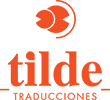When the AI translates and the human interprets
We live in an era where machines seem to understand everything. It is enough to copy and paste a text into an automatic translator to obtain a “functional” version in seconds. However, when it comes to accuracy, trust or brand reputation, this immediacy can be costly. This is where the value of human translation comes in.
Artificial intelligence (AI) has revolutionized the translation industry. Neural engines have improved so much that they even detect grammatical and regional nuances. But there is still one frontier they cannot cross: human interpretation.
Translating is not just transferring words, but transferring meanings. It is understanding the intention behind a legal sentence, the sensitivity of a medical protocol or the tone of a corporate communication. In other words, it is knowing when not to translate literally.
At Tilde, we see it every day: when AI translates a legal or scientific document, it does so from patterns; when a certified translator reviews it, it does so from understanding. We call this translation with human judgment. The difference may seem small, but the impact is immense: a misplaced word in a clinical study can alter a result; an inaccurate term in a contract can generate a conflict.
Therefore, in regulated or highly technical sectors, the real value lies in the synergy between AI and humans. The machine accelerates, but the professional guarantees. The AI translates, but the human interprets, validates and transforms the text into a message that respects the original intent.
Intelligent translation is not just a matter of speed, but of comprehension. At Tilde, the balance between technology and human judgment is what allows us to offer quality translations certified under ISO 9001 and ISO 17100.
Learn about our🔗 Confidentiality and privacy policy.







